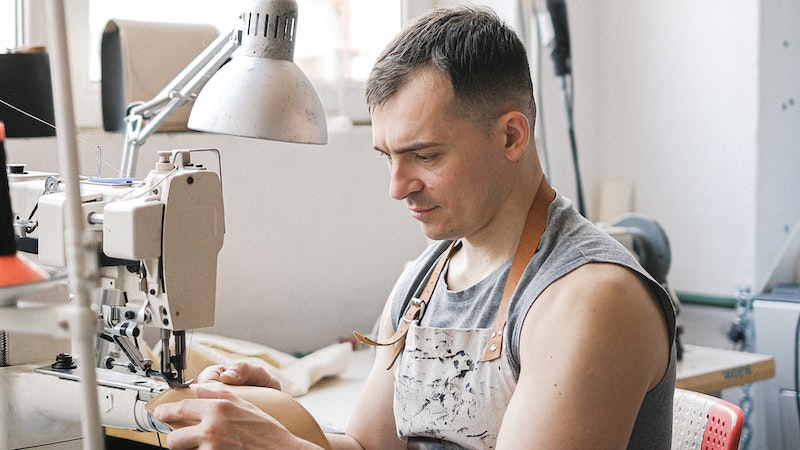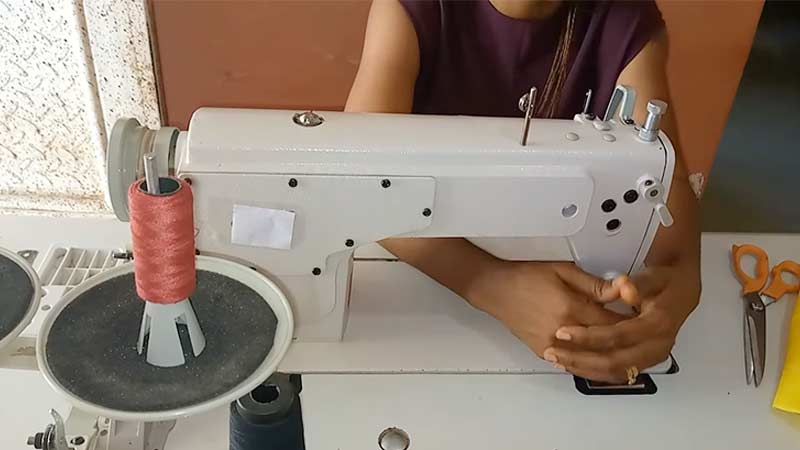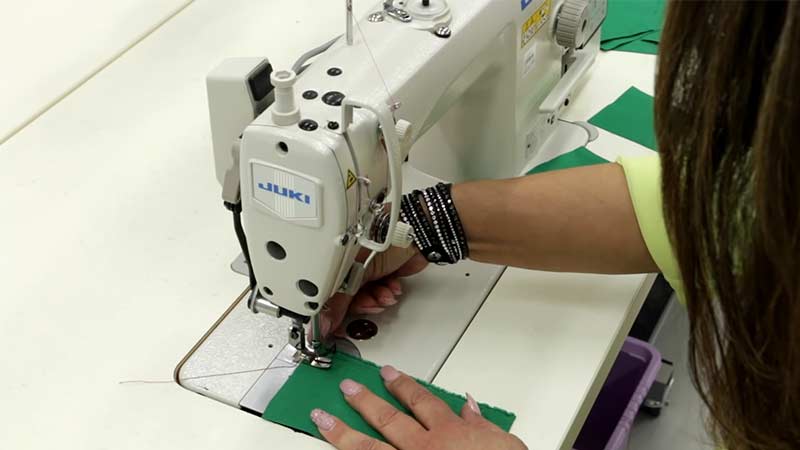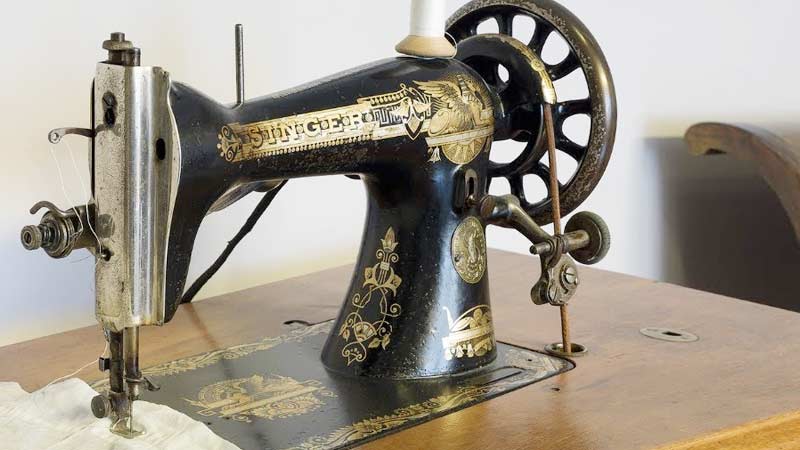The intersection of technological advancements and historical, social dynamics prompts an examination of the impact of sewing machines on the institution of slavery in the 19th century.
The invention of sewing machines revolutionized textile production, altering the landscape of the clothing industry.
Some argue that this innovation indirectly contributed to the increase of slavery by intensifying the demand for cotton, a crucial raw material predominantly cultivated through slave labour in the Southern United States.
However, historical perspectives diverge, with counterarguments highlighting pre-existing factors and broader societal shifts.
In unravelling the complexities of this historical narrative, we explore whether sewing machines served as catalysts for the expansion of slavery or were merely products of a larger socio-economic tapestry.

Did Sewing Machines Increase Slavery?
The relationship between sewing machines and the increase of slavery in the United States is a complex and debated historical question. Some argue that sewing machines indirectly contributed to the expansion of slavery, while others challenge this notion.
Advocates of the idea posit that the efficiency of sewing machines increased the demand for cotton, particularly in the Southern states where slavery was prevalent, thereby driving the expansion of slavery.
On the other hand, critics contend that factors such as pre-existing demand for cotton, global market dynamics, and broader social changes played significant roles, making the sewing machine just one of several contributing factors.
The connection between sewing machines and the increase in slavery is a nuanced and multifaceted historical issue.
How Did Sewing Machines Contribute to the Rise of Slavery?

The claim that sewing machines directly contributed to the rise of slavery is a nuanced and debated historical argument.
While sewing machines played a crucial role in transforming the textile industry during the 19th century, their direct impact on the expansion of slavery is complex and involves various factors:
Increased Demand for Cotton
The efficiency of sewing machines in mass-producing clothing led to a higher demand for cotton. In the southern United States, where slavery was prevalent, cotton was a major cash crop.
The argument is that this heightened demand incentivized plantation owners to expand cotton cultivation, relying on slave labour to meet the increased production needs.
Economic Incentives
The reduced cost of clothing due to sewing machines made garments more affordable and increased overall consumption. This, in turn, created economic incentives for plantation owners to produce more cotton, potentially leading to an expansion of slave-based agriculture.
Global Market Dynamics
The rise of the textile industry and the demand for cotton shifted global market dynamics. The southern United States became a dominant player in cotton production, potentially intensifying the reliance on slave labour to meet the increased demands of the industry.
Did Sewing Machines Help Reduce the Demand for Slave Labor?

The impact of sewing machines on the demand for slave labour is a subject of historical debate. While sewing machines revolutionized the textile industry and transformed clothing production, their influence on the overall demand for slave labour is complex.
Some arguments suggest that sewing machines may have had both positive and negative effects on the demand for slave labour:
Positive Aspects:
- Increased Efficiency and Productivity: Sewing machines significantly increased the efficiency and productivity of clothing production. This reduction in manufacturing costs might have lessened the economic incentive for certain industries to rely on slave labour.
- Diversification of Labor: The adoption of sewing machines led to the diversification of labour in the textile industry. While some tasks were mechanized, there were still roles for skilled and unskilled labour, potentially reducing the dependence on slave labour in specific manufacturing processes.
Negative Aspects:
Economic Growth and Cotton Demand
The increased efficiency of sewing machines contributed to the growth of the textile industry, leading to a higher demand for raw materials like cotton.
In regions where cotton was a major crop, such as the southern United States, this heightened demand might have perpetuated or increased the reliance on slave labour for cotton cultivation.
Indirect Impact
While sewing machines may not have directly increased the demand for slave labour in the textile industry, their influence on overall economic growth and the demand for raw materials could indirectly contribute to the persistence of slave labour in other sectors.
How Did the Sewing Machine Impact Society? From Hand-Stitched to High-Speed

The invention of the sewing machine had a profound impact on society, bringing about significant changes in various aspects of daily life, economy, and culture.
Here are several ways in which the sewing machine influenced society:
Industrialization of Textile Production
Before the sewing machine, textiles and clothing were largely produced by hand, which was a time-consuming and labour-intensive process. The sewing machine revolutionized textile production by automating stitching, leading to faster and more efficient manufacturing.
Mass Production of Clothing
The sewing machine enabled the mass production of clothing. It drastically increased the speed at which garments could be produced, making them more affordable and accessible to a broader population segment.
This, in turn, contributed to the growth of the fashion industry.
Economic Impact
The efficiency of the sewing machine reduced the cost of producing clothing, leading to economic benefits. It created job opportunities in the textile industry and related sectors, contributing to economic growth.
Additionally, the lower cost of clothing allowed people to allocate their resources to other goods and services.
Impact on Labor
While the sewing machine created job opportunities in the textile industry, it also transformed the nature of labour. Factory settings with machines replaced some traditional handcrafting methods.
This shift had implications for the workforce, including changes in working conditions and labour relations.
Women’s Independence
The sewing machine played a significant role in women’s lives. It allowed women to sew at home, promoting a sense of independence and self-sufficiency.
Women could now contribute to family economies and had more control over clothing production.
Standardization of Clothing Sizes
With the advent of sewing machines, there was a move towards standardizing clothing sizes. This contributed to the development of ready-to-wear clothing, as manufacturers could produce garments more efficiently with consistent sizing.
Fashion Trends and Consumer Culture
The increased availability of affordable clothing influenced the emergence of fashion trends and consumer culture. People could more easily update their wardrobes, contributing to a faster turnover of clothing styles.
Global Trade and Market Dynamics
The sewing machine played a role in shaping global trade patterns. It influenced the dynamics of the textile and clothing industries, with certain regions becoming dominant players in manufacturing.
Technological Innovation
The sewing machine marked a significant technological innovation during the Industrial Revolution. Its success paved the way for further advancements in manufacturing technologies, setting the stage for future industrial developments.
Did Sewing Machines Increase Slavery in America?
The impact of sewing machines on slavery in America is debated. Advocates argue that the machines increased the demand for cotton, driving the expansion of slavery due to the Southern reliance on cotton cultivation.
The efficiency of clothing production allegedly intensified the economic incentives for slave-based agriculture. Critics contend that other factors, such as pre-existing demand for cotton and global market dynamics, played significant roles.
Additionally, the sewing machine’s role in reducing clothing costs and promoting women’s independence may have counteracted some aspects of the institution of slavery.
The relationship between sewing machines and slavery is complex, involving a combination of economic, technological, and social factors.
FAQs
Were sewing machines the primary factor in the growth of slavery?
Sewing machines were one factor among many influencing the 19th-century socio-economic landscape; their direct role in slavery’s growth is complex.
Did sewing machines contribute to gender roles in the 19th century?
Yes, sewing machines influenced gender roles by enabling mass production, altering the perception of “homemade” clothing, and impacting women’s roles in the workforce.
How did sewing machines affect the demand for cotton and slavery?
Sewing machines increased the demand for cotton by mass-producing clothing, potentially influencing the expansion of slavery in regions reliant on cotton cultivation.
Is there consensus among historians on the role of sewing machines in slavery?
No consensus exists; the impact of sewing machines on slavery is complex, involving varying historical perspectives and interpretations.
To Recap
The relationship between sewing machines and the increase of slavery in the 19th century is a nuanced interplay of economic, technological, and social factors.
While the efficiency of sewing machines intensified the demand for cotton, a vital crop in slave-dependent regions, its direct role in the expansion of slavery remains debated.
Counterarguments emphasize pre-existing influences and broader societal changes. Acknowledging the transformative impact of sewing machines on the textile industry, this historical exploration underscores the complexity of causation.
It urges a comprehensive understanding of the multifaceted forces shaping the era, illustrating how the consequences of technological innovation are deeply entwined within the fabric of socio-economic dynamics and historical narratives.
Leave a Reply